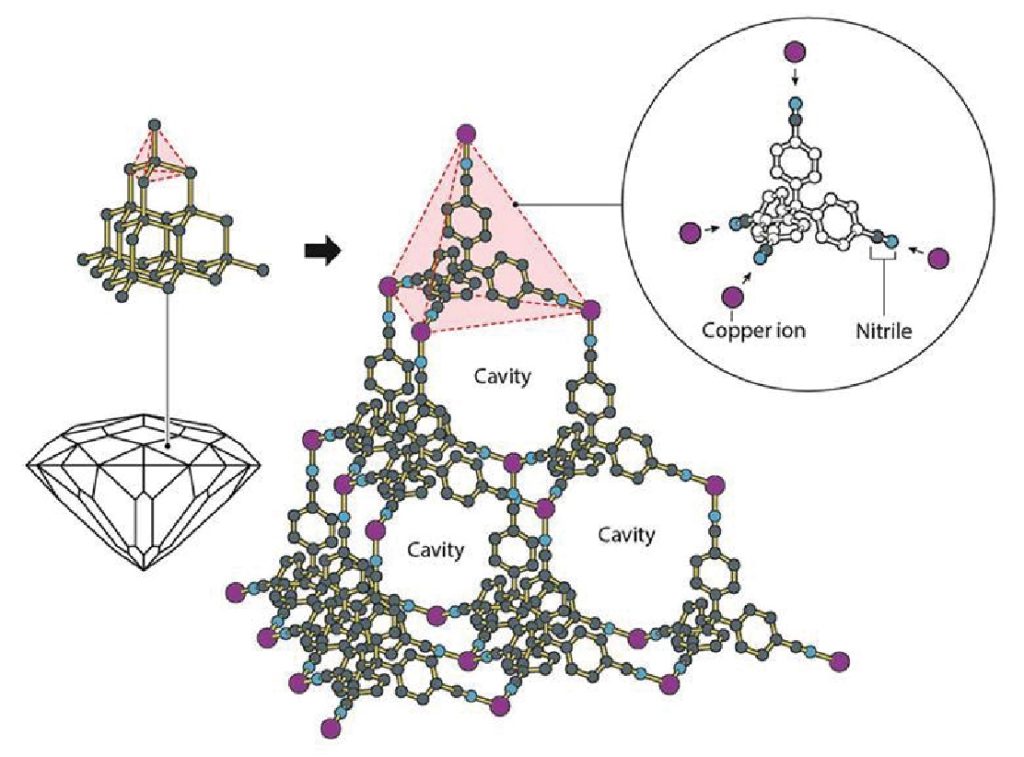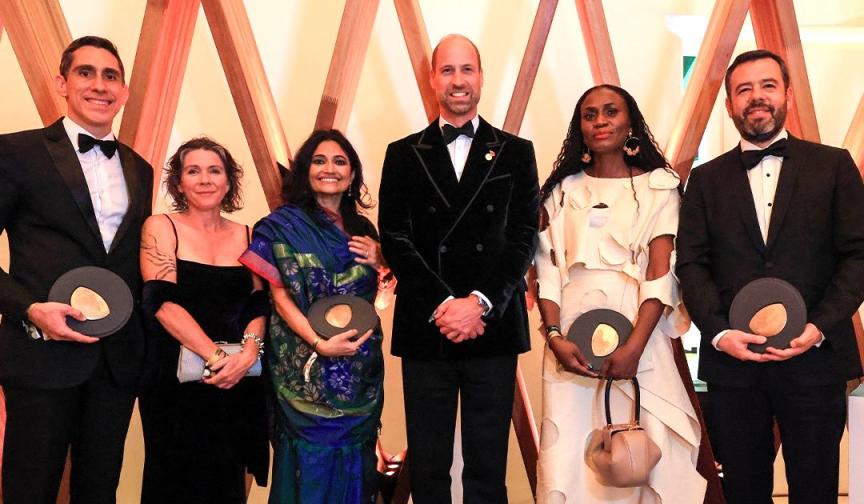An overview of the discovery, development, and potential applications of metal-organic frameworks.
When the 2025 Nobel Prize in Chemistry was awarded to Richard Robson of the University of Melbourne, Susumu Kitagawa of Kyoto University, and Omar Yaghi of the University of California, Berkeley, most people outside the scientific community paused at the phrase that defined their win: Metal–Organic Frameworks, or MOFs. It does not exactly roll off the tongue, nor does it sound like something that would ever touch our daily lives. But look closer, and you will find that this innovation has the quiet potential to transform the world as we know it.
Just a few decades ago, MOFs were the kind of topic that belonged in university lecture halls — fascinating, yes, but seemingly impractical. It was a topic often discussed by hopeful professors whose enthusiasm outpaced real-world application. Yet, what once felt like scientific curiosity has evolved into one of the most dynamic and vibrant areas of modern materials research.
The field has grown at a staggering pace. In the early 2000s, only a handful of research groups studied MOFs, publishing no more than a few dozen papers a year. By 2024, that number had surged to more than 10,000 research papers annually, and scientists had catalogued over 100,000 unique MOF structures. What began as a promising concept is now a thriving frontier.
The researchers’ journey began in 1989. Richard Robson combined positively charged copper atoms with a four-armed organic molecule. This created a spacious crystal — something like a diamond filled with countless tiny compartments. It was both orderly and open, a structure of great beauty.
In the following decade, Omar Yaghi and Susumu Kitagawa built on Robson’s work. They showed that gases could flow in and out of these molecular networks. Between 1992 and 2003, they improved the framework’s stability, flexibility, and tunability. By the end, Robson’s elegant crystal had been transformed into a functional material that could be customised for many different purposes.
What are MOFs?
Imagine a sponge, but instead of soaking up water, it traps gases, vapours, and molecules at the atomic level. Now imagine that this sponge is not made from foam but from metal ions linked together by long organic molecules. These ions and molecules are arranged in such a way that they form crystals with large cavities, which can be used to capture and store substances. That is a Metal–Organic Framework, or MOF — part metal, part organic, and entirely fascinating.
What makes MOFs extraordinary is their porosity. Inside a single gram of MOF material, about the size of a sugar cube, there can be enough internal surface area to cover several football fields. This means they can soak up astonishing amounts of gas or liquid. And no, those trapped molecules do not slosh around freely. They stay neatly held in place by weak chemical forces within the material’s orderly pores, stable and contained until heat or pressure sets them free.
INSIDE A SINGLE GRAM OF MOF MATERIAL, ABOUT THE SIZE OF A SUGAR CUBE, THERE CAN BE ENOUGH INTERNAL SURFACE AREA TO COVER SEVERAL FOOTBALL FIELDS. THIS MEANS THEY CAN SOAK UP ASTONISHING AMOUNTS OF GAS OR LIQUID.
Why MOFs are Gaining Attention
For decades, MOFs were admired mostly for their beauty — intricate, symmetrical, and scientifically elegant, but too fragile and costly for practical use. That perception is now changing. With advances in synthesis methods and cheaper raw materials, MOFs are finally stepping out of the lab and into the real world. This means the conversation around MOFs has shifted from “what if” to “what next?”
What makes this moment special is not just that three scientists won the Nobel Prize; it is that their collective work, once confined to the pages of academic journals, is now poised to address some of humanity’s most pressing challenges. From climate technology to construction materials, MOFs are moving from microscopic marvels to macroscopic impact.
How MOFs Could Impact the World
The development of new MOFs has revolved around three core functions: storage, separation, and conversion, each of which opens a gateway to world-changing applications.
In climate science, MOFs could become a frontline defence against global warming. Their intricate pores can be engineered to capture carbon dioxide directly from industrial exhaust or even the atmosphere itself. This could potentially offset emissions from factories, power plants, or vehicles. Some variants can also trap and neutralise toxic gases, including those used in warfare, turning what is poisonous into something harmless.
The same porous architecture makes MOFs powerful tools for water purification. They can be customised to filter “forever chemicals,” persistent pollutants that conventional systems struggle to remove. They can also harvest moisture from dry desert air, quite literally pulling clean water out of thin air. In regions facing chronic drought, this could become nothing short of transformative.
Energy is another frontier. MOFs can store hydrogen or methane efficiently, paving the way for safer, cleaner fuels. Their chemical tunability also makes them ideal for fuel cells, batteries, and catalytic systems. This means lighter, more efficient energy storage.
Healthcare is another exciting application. Embedded in sensors, MOFs can detect specific gases with the sensitivity of a human nose, only far more accurately. Paired with machine learning, these sensors could analyse patterns in human breath to detect diseases such as diabetes, lung infections, or even certain cancers. Researchers are already experimenting with flexible MOF films and circuits that could one day become part of wearable or portable diagnostic devices.

Is There a Catch?
As with any breakthrough, there are caveats. Many MOFs are still too delicate for harsh real-world environments. Some crumble when exposed to humidity or high temperatures. Large-scale production remains expensive, and ensuring consistent quality across tons of material is no small feat.
There is also the challenge of integration. How do you incorporate these microscopic frameworks into existing materials or systems without compromising their structure? Engineers are working on hybrid materials and coatings to solve that, but the road to commercial use is still being paved.
Still, the pace of progress is remarkable. Like graphene a decade ago, MOFs are at the early buzz stage, but with far clearer pathways to practical use.
MOFS CAN STORE HYDROGEN OR METHANE EFFICIENTLY, PAVING THE WAY FOR SAFER, CLEANER FUELS. THEIR CHEMICAL TUNABILITY ALSO MAKES THEM IDEAL FOR FUEL CELLS, BATTERIES, AND CATALYTIC SYSTEMS.
In the End
If materials are the building blocks of modern civilisation, MOFs might be the next evolution, materials with intelligence built into their very structure. As science inches closer to scalable, stable MOFs, we may be witnessing the quiet rise of a new class of smart materials that could redefine how we build, power, and sustain our world. In a century hungry for cleaner, smarter solutions, that is a framework worth building on.














